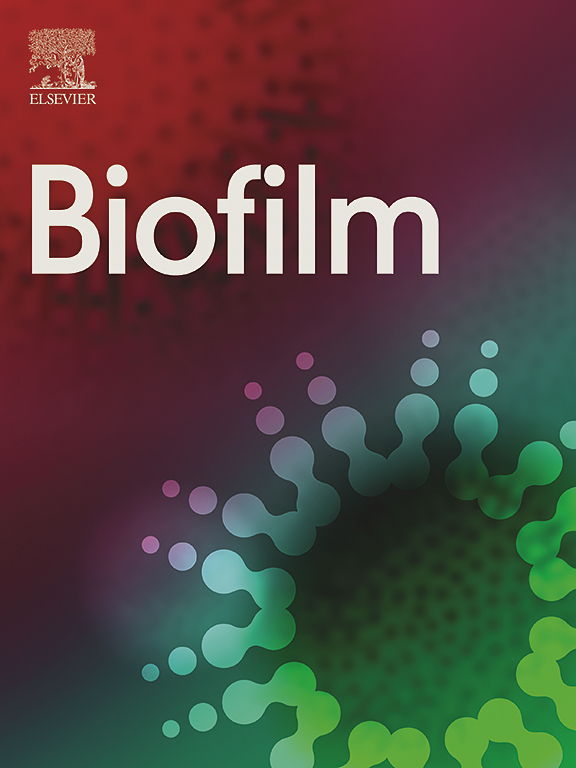CCDC86-BHLHE40-ATF3轴促进胶质瘤中有氧糖酵解和肿瘤发展
IF 9.4
2区 医学
Q1 BIOCHEMISTRY & MOLECULAR BIOLOGY
引用次数: 0
摘要
胶质瘤是一种侵袭性恶性脑肿瘤,预后较差,占所有原发性恶性脑肿瘤的近50%。尽管在其他癌症中具有重要意义,但CCDC86在胶质瘤中的作用仍未得到充分研究。我们的研究显示,CCDC86在胶质瘤组织中的表达显著上调,与患者年龄、肿瘤复发和病理分级显著相关。此外,在胶质瘤患者中,CCDC86水平升高与预后恶化有关。功能实验表明,CCDC86在体外抑制胶质瘤细胞增殖和迁移,诱导细胞凋亡和细胞周期阻滞,在体内抑制肿瘤发生。此外,ATF3作为CCDC86的下游靶基因出现,因为它的敲低可以抵消CCDC86在胶质瘤细胞中过表达诱导的致癌作用。机制上,CCDC86通过与BHLHE40相互作用,促进BHLHE40对ATF3的转录调控,稳定ATF3的表达。此外,我们的研究揭示了CCDC86通过ATF3激活ERK信号通路的潜在机制,从而影响糖酵解以驱动肿瘤进展。总之,我们的研究强调了CCDC86在胶质瘤进展中的关键作用,表明它有可能成为开发新型胶质瘤治疗方法的治疗靶点。本文章由计算机程序翻译,如有差异,请以英文原文为准。
CCDC86-BHLHE40-ATF3 axis promotes aerobic glycolysis and tumor development in glioma
Glioma, an aggressively malignant brain tumor with a poor prognosis, comprises nearly 50% of all primary malignant brain tumors. Despite its significance in other cancers, the role of coiled-coil domain containing 86(CCDC86) in glioma remains largely unexplored. Our study revealed a significant up-regulation of CCDC86 expression in glioma tissues, correlating notably with patient age, tumor recurrence, and pathological grade. Moreover, elevated CCDC86 level was associated with a worsened prognosis among glioma patients. Functional assays demonstrated that CCDC86 knockdown attenuated glioma cell proliferation and migration while inducing apoptosis and cell cycle arrest in vitro and inhibited tumorigenesis in vivo. Furthermore, ATF3 emerged as a downstream target gene of CCDC86, as its knockdown could counteract the oncogenic effects induced by CCDC86 overexpression in glioma cells. Mechanistically, CCDC86 promoted the transcriptional regulation of ATF3 by BHLHE40 through interaction with it, stabilizing the expression of ATF3. Additionally, our investigation unveiled a potential mechanism whereby CCDC86 activated the ERK signaling pathway through ATF3, thus influencing glycolysis to drive tumor progression. In conclusion, our study highlights the pivotal role of CCDC86 in glioma progression, suggesting its potential as a therapeutic target for the development of novel glioma treatments.
求助全文
通过发布文献求助,成功后即可免费获取论文全文。
去求助
来源期刊

Genes & Diseases
Multiple-
CiteScore
7.30
自引率
0.00%
发文量
347
审稿时长
49 days
期刊介绍:
Genes & Diseases is an international journal for molecular and translational medicine. The journal primarily focuses on publishing investigations on the molecular bases and experimental therapeutics of human diseases. Publication formats include full length research article, review article, short communication, correspondence, perspectives, commentary, views on news, and research watch.
Aims and Scopes
Genes & Diseases publishes rigorously peer-reviewed and high quality original articles and authoritative reviews that focus on the molecular bases of human diseases. Emphasis will be placed on hypothesis-driven, mechanistic studies relevant to pathogenesis and/or experimental therapeutics of human diseases. The journal has worldwide authorship, and a broad scope in basic and translational biomedical research of molecular biology, molecular genetics, and cell biology, including but not limited to cell proliferation and apoptosis, signal transduction, stem cell biology, developmental biology, gene regulation and epigenetics, cancer biology, immunity and infection, neuroscience, disease-specific animal models, gene and cell-based therapies, and regenerative medicine.
 求助内容:
求助内容: 应助结果提醒方式:
应助结果提醒方式:


